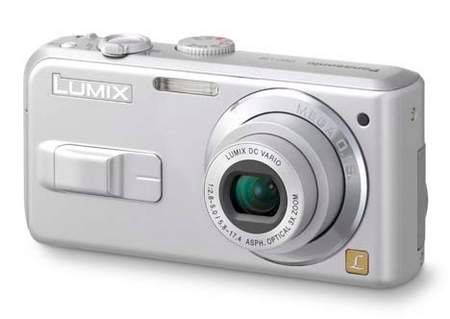The LS2 fits into the Lumix range near the bottom and has a price to match – a penny shy of £150. But that should be music to the ears of anyone working on a tight budget but requiring plenty of photography bang for their buck.
Our quick take
Apart from the excessive noise issues over ISO 200, the LS2 performs remarkably well. In fact, I had to keep reminding myself that this was a sub £150 camera. There’s a smidgen of shutter lag, which became a tad frustrating and movies are only 320x240-pixel resolution (but with 30fps capture rate), but there’s much to commend this little camera.
As with most Panasonic digital cameras, high-end or low, the Lumix LS2 is as accomplished (for the price) as the best of them. It is a camera I can recommend for anyone after an inexpensive but feature rich digital compact.

Panasonic Lumix DMC-LS2 digital camera - 4.0 / 5
| FOR | AGAINST |
|---|---|
|
|
The LS2 features a 5-megapixel sensor, so there’s resolution enough for prints up to and over A3. The 3x optical zoom lens features a 35 to 105mm zoom range and aspheric lens elements to help keep distortions and the like to a minimum.
A standard set of white balance options is bolstered by an easy to use custom setting, so there’s almost as much control on white balance as with some high-end (read much more expensive) models. Couple that with auto exposure bracketing, exposure compensation, five-area AF and 5cm macro, and you have an accomplished little camera.
The pièce de résistance however must be that it is a camera at this price with optical image stabilisation (OIS). You unquestionably get a good bang for your buck ratio, so, what is it like to use?
A curved, silver liveried but blocky plastic body has the usual array of easy to use buttons. On the top plate sit the shutter release, mode dial, zoom control (surrounding the shutter release) and the on off button. It is also home to the OIS control, which has three modes: Off, Mode 1 where the OIS is continuously applied and Mode 2, where it only activates when the shutter fires. Mode 2 also has a greater stabilising effect than Mode 1.
Two AA batteries slot into a port on the right side (from the back) of the camera, while the external SD/MMC storage fits snugly into a hatch on the camera’s base. A USB2.0 port and DC-in socket are found under a plastic cover on the left side.
On the back, a 2-inch colour LCD is sported with a four-way button array with controls for exposure compensation, flash, self-timer and reviewing images plus a menu/ok control. You also get buttons to toggle the display to reveal an active histogram, composition frame lines a high-angle (the screen appears to brighten) mode – it allows easier viewing when the camera’s held overhead for shots taken over a crowd, say – then back again and a delete/burst/fast frame rate mode control.
The shooting sensitivity range runs from ISO 80 to ISO 400, a more modest range than most of the newer digicams arriving today and it is also one of the areas when we finally start to arrive at a problem. Image noise.
While image distortion at the 35mm end of the zoom is virtually non-existent, the image noise beyond ISO 200 is much more prevalent than I’d have hoped or liked.
While it is not intrusive enough to show up on normal 6x4-inch enprints and is held in check at the lower (so better quality) ISO 100 and ISO 80 settings quite well, it mars an otherwise great performance beyond those settings and has implications for anyone wanting to make larger prints or tight crops of their shots.
Otherwise, captured detail is superb (I created a quick panoramic image included here and the level of detail I s very good – even with very flat lighting); the lens is obviously sharper than a new pin and it’s fast, the F2.8 maximum aperture allowing plenty of light to fall on the sensor at the wide end of the zoom.
To recap
The Panasonic Lumix DMC LS2 is at the low end of the price range in terms of budget digital cameras yet it comes choc-full of features making it of real interest to any snappers looking for a decent digital compact on a tighter budget
